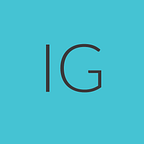Speculative Design Project
Future Dating
Background Research
The speculative design topic sparked our interest, and we were enthusiastic about selecting the theme and product for our project. To facilitate our brainstorming process, we utilized the Future Scan template. Out of the 150 future trends, we carefully selected a few themes to explore further:
- Dating in the future
- Digital isolation
- Tracking fake news
- Neurotech
- AI body scanner for diagnosis
- Virtual personal assistant
We unanimously agreed on exploring the theme of “dating in the future.” Our subsequent steps included:
1. Conducting signal and tech research
2. Conducting persona research
3. Exploring virtual research
Each team member contributed unique story ideas, which we then visualized through the creation of storyboards.
Goal Statement
User Persona
UI Design
After completing our research, we formulated a product idea for a VR dating application. Initially, we considered connecting the mobile application to VR glasses, but upon further deliberation, we determined that it would be more user-friendly and intuitive to connect to VR Dating via a VR handset. As a result, we focused on designing the user interface (UI) for this type of product.
Three designers collaborated on the project and dedicated four weeks to developing VR applications for virtual dating.
What went well and poorly during the project.
The project had its strengths and weaknesses. On the positive side, we had a team of designers with diverse skills and talents, which greatly contributed to the successful completion of the project. Sara excelled in video creation, Daniel brought in great ideas, and I had experience in UI design from my years of working on mobile applications. We utilized tools like Miro, Figma, and AfterEffects to support our design process, each of us proficient in different areas.
The team collaboration was exceptional. We all actively participated in generating ideas, and our work was highly effective and efficient. Our organization and punctuality during workshops and weekly meetings ensured progress and led to exciting solutions. We quickly agreed on the product idea at the start, which provided a clear direction for our efforts.
In terms of teamwork, this project was a success.
However, while teamwork played a significant role, creating a perfect product required more than just collaboration. Time constraints posed a challenge as we had a substantial amount of work to accomplish within a limited timeframe. This resulted in certain design phases being omitted, and decisions were made based on assumptions and prioritization. Unfortunately, there was insufficient time for thorough user research, which could have greatly enriched the product.
Overall, while our teamwork was commendable, better project management and more time allocation for detailed work and user research would have further improved the outcome.
What I learned during the project
- One important lesson I gained from this experience is not to stress over things that are beyond our control. The time constraint was a challenge we couldn’t avoid, as the project had a fixed deadline. Instead of getting overwhelmed, it was crucial to prioritize our work and determine what tasks were essential and what could be left out. Setting clear priorities from the beginning helped us stay focused and make the most of the available time.
- Working under time pressure also highlighted the importance of being well-organized. This is a valuable skill in any job, not just when facing tight deadlines. Effective organization helped us manage our tasks efficiently and ensured that we stayed on track despite the time limitations.
- Another valuable lesson was the importance of putting ego aside. It’s essential to be open to others’ ideas and perspectives, as they may bring valuable insights and improvements. Collaborating as a team meant being receptive to different viewpoints and recognizing that someone else’s idea might be better than our own. By embracing this mindset, we fostered a more creative and collaborative environment.
- Lastly, this project reaffirmed the importance of continuous learning. While it wasn’t a new realization for me, it emphasized how much more I still want to explore and understand. The experience sparked a desire to deepen my knowledge and broaden my skills further.
- Overall, the project taught me the significance of managing time effectively, being open-minded, and maintaining a continuous learning mindset.
Resources:
Photo by NASA on Unsplash https://unsplash.com/photos/lEBDlbXLEgs
Photo by James Yarema on Unsplash https://unsplash.com/photos/E-CdfbrnnFs
images: Freepik.com
All videos and images used in our prototype video were free via Pexels.com or paid for via iStock.com
